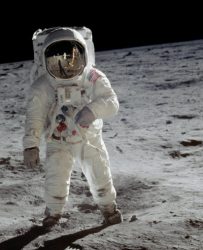Where Buzz Aldrin has god-like status!

Where Buzz Aldrin has god-like status!

U.S. astronaut Edwin “Buzz” Aldrin became the second person to walk on the moon on July 20, 1969, during the Apollo 11 mission. His romp on the lunar surface came about 20 minutes after Neil Armstrong became the first person to walk on the moon.
Back to SilverMedals Referencepedia...
By the time astronaut James McDivitt stepped into the Apollo 9 spacecraft on March 3, 1969, he had already built a reputation as a solid and trusted American pilot and astronaut. A member of NASA’s “Second Group” of astronauts, his first trip into space came as mission commander of the Gemini IV mission in June 1965. That particular mission was…read more
Venus is the planet second-closest to the the sun in our solar system and Earth’s nearest neighbor. The cloudy rocky planet orbits the sun at an average distance of 67,238,251 mi (108,209,475 km) at a mean orbital velocity of 78,339 mph (126,074 km/h). For us Earthlings, Venus also the second-brightest object in the night sky, with the first being the…read more
When Alan Bean retired from NASA and decided to become a full-time professional fine-art artist, he had to shed his aeronautical engineering and astronaut self to allow his inner artistic vision come through to the canvas. Not an easy task for the former Apollo 12 astronaut, one of only 12 men to have walked on the surface of the moon,…read more
Sputnik 1 was successfully launched by the Soviet Union on October 4, 1957, becoming the first artificial object to reach Earth orbit. Having been launched during the Cold War era, this tiny, beeping, ball-shaped satellite caused great concern among many paranoid red-scared Americans for whom the event was not so much a great moment of scientific achievement, but rather a disconcerting development…read more